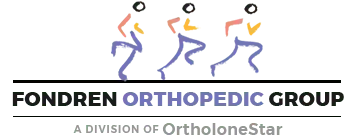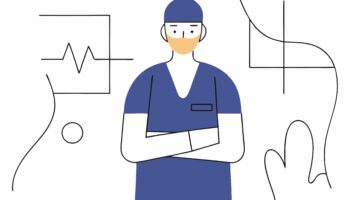
We are currently living in a pandemic era, where mask readjustments and head nods have replaced handshakes and hugs, and Zoom virtual meetings are now the preferred method of communication between colleagues and friends. While social distancing has created new, non-ideal societal norms, it has had surprising positive benefits within healthcare. By forcing providers to embrace new technological innovations to provide medical services from a distance, healthcare has in fact integrated healthier practices – which the care industry has been working towards for years – that will shape the future of health moving forward.
Hospitals – Too Close For Comfort
While we like to think of hospitals as safe havens, the unfortunate reality is far bleaker, especially in light of the coronavirus. Even prior to Covid-19, the likelihood of spreading viruses and hospital acquired infections was found to increase the longer patients remained in hospitals, with hospital stays incurring a 17.6% risk of patient infection and increasing 1.6% each additional day.
Making matters more complicated, the vast majority of hospitals and healthcare facilities rely on antiquated, manual spot-checking methods to monitor patient status. These spot-checks, which require medical professionals to physically check on patient vitals, occur every four to eight hours and by default can increase the risk of infection. More significantly, infrequent spot-checking leaves patients unmonitored for extended periods of time. This means that health staff members are not receiving the most updated patient info, which may be further complicated when nursing staff shifts change. This can lead to inconsistent patient data results and even miscommunication of patient condition. Spotty patient data has the potential to lead to detrimental patient outcomes.
The risk of infection has been exacerbated by Covid-19, whose acute threat to both patients and medical staff has turned hospitals into infection hotspots, restricting high-risk patients to the confines of their homes and preventing them from receiving the care they need.
From a patient monitoring perspective, medical professionals still need to perform manual, spot-checks, requiring them to wear personal protective equipment (PPE) when interfacing with Covid-19 patients. While PPE is highly effective in mitigating the risk of infection, it is cumbersome to wear, costly and does not guarantee protection or accurate patient monitoring results.
Reducing Exposure Through Remote Patient Monitoring
To help negate the threat of infection and provide medical staff with accurate and reliable patient vital readings – both inside and outside of the care setting – hospitals and healthcare facilities have turned to advanced remote patient monitoring tools to track patient vitals from a safe distance. These tools continuously monitor a wide range of patient vitals, from blood pressure, respiratory rate and heart rate to motion, temperature and sweat levels, providing medical staff with accurate, up-to-date views of patient health.
These monitors are usually wearable or embedded to help ensure patient comfort and eliminate the need for wire or lead readjustments throughout the rigors of patient care. Moreover, their non-invasive nature reduces the risk of bleeding and local infection – which can occur when using invasive monitoring devices – while allowing for consistent, reliable patient vital readings, as they are not subjected to manual placement. This significantly reduces the need for physicians and nurses to enter Covid-19 wards to perform spot-checks or readjust monitors and potentially expose themselves to harmful infection.
Within the home setting, these tools also allow patients suffering from chronic conditions, comorbidities or Covid-19 to be monitored within the comfort of their home. This prevents hospital overload and helps inhibit growing infection rates.
Empowering Medical Experts with AI
While remote patient monitoring is crucial for helping medical practitioners make key decisions, especially as a Covid-19 patient’s health status can deteriorate rapidly, medical teams still lack patient management insight that allows them to properly triage patients and prioritize care in overflooded coronavirus wards. This lack of actionable insight limits the ability of medical staff to apply the right care at the right time during ward overpopulation, leaving room for new protocols and technologies to assist with this process.
The inclusion of AI-powered patient analytics within remote patient monitoring systems addresses this need by stratifying continuous patient data so that it is actionable. With these added capabilities, providers can monitor thousands of patients at once and rely upon advanced systems to triage and direct patient care to those who need it most, maximizing hospital resources. AI-features like early warning score systems, whose reliable algorithms are built upon big data sets, help detect potential deterioration early, giving medical staff an advantage over Covid-19 and many other critical conditions and allowing them to take preventative action to improve patient outcomes.
From an efficiency standpoint, the data sets in which AI-features are built upon, are generated by new patient data input provided by continuous monitoring, creating a self-sustaining cycle in which such tools become more reliable and more accurate with increased usage. In light of the lack of knowledge and impact surrounding the novel coronavirus, this information can enlighten medical staff dealing with Covid-19 patients and make a direct positive impact. This technology can also play a crucial role in the future of patient care as other viruses and diseases begin to spread.
Embracing The Future of AI-Assisted Healthcare
As the entire healthcare continuum continues to battle with Covid-19 and come to terms with social distance norms, it is important to appreciate the impact of medical distancing and the technological innovations that have come with it. By fast-tracking the implementation of AI-powered remote patient management platforms, medical teams are now more capable of improving patient outcomes and reducing the spread of infection while simultaneously contributing to the overall knowledge of the novel virus.
In witnessing that advanced AI patient management systems can provide immediate and future relief to providers, our weary healthcare system has discovered that new technologies can support physicians and nurses in times of extreme difficulty and can be relied upon. As we look to the future, the utilization of AI-powered remote patient monitoring systems in this current pandemic era will serve as a use-case for healthcare facilities across the globe, paving a path for standardization of remote patient care and improving patient outcomes in the hospital and the home.
Arik Ben Ishay is the CEO and co-founder of Biobeat, developer of wearable AI-powered remote patient monitoring solutions. Arik holds an LLB in Law, a BA in Accounting and is a volunteer Paramedic with MDA, Israel’s National Emergency Pre-Hospital Medical and Blood Services Organization.
This post appears through the MedCity Influencers program. Anyone can publish their perspective on business and innovation in healthcare on MedCity News through MedCity Influencers. Click here to find out how.










